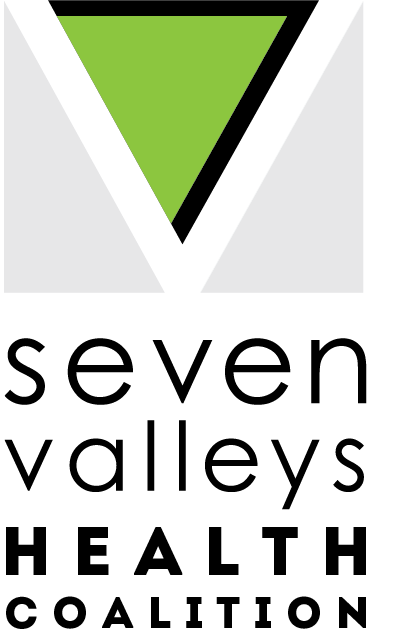#MondayMeals: Cornbread - A Traditional Thanksgiving Staple
Hello and Welcome to our new Monday Meals weekly blog post! Each week, we will share recipes that are healthy, affordable, and easy to make with fresh local ingredients! As we are so close to Thanksgiving, it is only appropriate that our first post should share a traditional Thanksgiving staple: Cornbread!
Thanksgiving as we know it today originates from Native American ceremonies in which communities would celebrate the end of a bountiful harvest season. Individuals within their respective communities would meet together at the end of the growing period to give thanks for the food produced and to store away the harvested corn for the winter. It was common for families to bake old-fashioned traditional cornbread in preparation for the celebratory feast. The cornbread, along with other customary dishes, was brought into the longhouse and served to the community. A speaker would then congratulate the community on the success of their harvest.
Evidence of the first “official” Thanksgiving was recorded in 1621. Most of us are familiar with the story of how the Wampanoag tribe and the early European immigrants celebrated the harvest season with a feast. But did you know they ate delicious foods we still have for Thanksgiving today? Foods present at the 1621 feast likely included: poultry, venison, and stuffing; vegetables such as corn (maize), onions, parsnips, collards, parsley, carrots, turnips, cabbage, and spinach; herbs like sage and thyme; fruits including pumpkins, grapes, and dried berries; and a variety of nuts.
Corn proved to be both versatile and vital to the early European immigrants. The Native Americans taught the colonists how to grind corn into meal for the purposes of making cakes, porridge, and bread. This means of food production allowed the colonists to survive the winter.
Cornbread itself is a European take on a traditional Native American food. Although we are very familiar with corn today, this crop was new and unusual to the early European immigrants, who were used to wheat. This cultural difference made it difficult for the colonists to follow recipes that used corn meal to make cake and bread. Cornmeal is cooked differently than wheat, which led to variations of what we know today as cornbread. Differences in available ingredients and cooking utensils also created changes within the recipe, leading to the development of diverse techniques for the production of cornbread in each colony.
Today, corn is one of the most widely consumed cereal grains. It is an excellent source of antioxidants, vitamins, minerals, and may promote eye health. Additionally, corn is a low/medium-glycemic food. This means that eating corn can help you feel full longer, and can help to keep blood sugar down. It is also high in fiber and protein and is relatively low in fat. Therefore, whole-grain corn is a staple food in a healthy diet.
In 2015, Cortland County planted an incredible 16,000 acres of corn crops. 7,100 acres of corn were harvested for human consumption. By purchasing your sweet corn locally, you can assist Cortland County’s economy by supporting local farmers and producers. The fresh local corn will also be great for your health!
Photo Credit: Joe McIntyre/staff photographer Annette and Gerald Neuman of Homer pick corn on Saturday for their roadside farm stand by Cortland Standard
Below are two historic and one modern recipe for cornbread. Feel free to try or compare recipes, and bring a piece of history to your own house just in time for Thanksgiving! Make sure to try these Tips and Tricks for Healthier Cornbread, and don’t forget to buy local!
Historic Recipes:
Cornbread (1796):
1 quart of milk
I pint of corn meal
4 eggs
4 spoons of flour
Pinch of salt
Mix together, bake on a pan with butter or fry in a dry pan
Corncake (1941)
1 1/2cups corn meal
1 tablespoon sugar
1 teaspoon salt
1 teaspoon baking soda
2 eggs, well beaten
2 cups buttermilk
1 1/2 tablespoons melted butter
Start your oven at 450 degrees and put in a 12-inch iron skillet to heat.
Sift together corn meal, sugar, salt, and baking soda into a bowl
Combine eggs and buttermilk and stir into corn-meal mixture, keeping it smooth.
Lastly, stir in butter.
Pour into the hot spider [iron frying pan with legs], well-greased, and bake (at 450 degrees) for 30 minutes."
Modern Recipe:
Betty Crocker Recipe
Cooking spray to grease the pan
1/4 cup butter (1/2 stick) or margarine
1 cup milk
1 large egg
1 ¼ cup yellow, white, or blue cornmeal
1 cup all-purpose flour
½ cup granulated sugar
1 cup granulated sugar
½ tablespoon of baking powder
½ teaspoon salt
Heat the oven to 400°F. Spray the bottom and sides of an 8-inch square pan or 9-inch round cake pan with the cooking spray.
In a 1-quart saucepan, heat the butter over low heat until melted.
In a large bowl, beat the melted butter, milk and egg with a fork or wire whisk until well mixed. Add the cornmeal, flour, sugar, baking powder and salt all at once; stir just until the flour is moistened (batter will be lumpy). Pour batter into the pan; use a rubber spatula to scrape batter from bowl. Spread batter evenly in pan and smooth top of batter.
Bake 20 to 25 minutes or until golden brown and a toothpick inserted in the center comes out clean. Serve warm.





